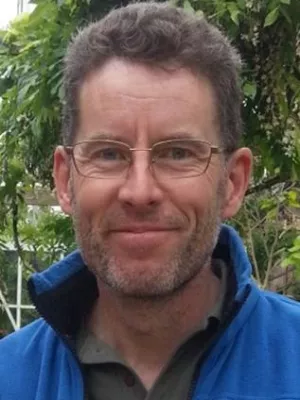
Dan Hammarlund
Professor

Lake Ecosystem Responses to Holocene Climate Change at the Subarctic Tree-Line in Northern Sweden
Author
Summary, in English
A Holocene sediment sequence from Lake Seukokjaure, a subarctic lake at tree-line in northern Sweden, was analyzed to assess major changes in the structure and functioning of the aquatic ecosystem in response to climate change and tree-line dynamics. The compiled multi-proxy data, including sedimentary pigments, diatoms, chironomids, pollen, biogenic silica (BSi), carbon (C), nitrogen (N) elemental and stable-isotope records, and total lake-water organic carbon (TOC) concentration inferred from near-infrared spectroscopy (NIRS), suggest that the Holocene development of Lake Seukokjaure was closely coupled to changes in terrestrial vegetation with associated soil development of the catchment, input of allochthonous organic carbon, and changes in the light regime of the lake. A relatively productive state just after deglaciation around 9700 to 7800 cal years BP was followed by a slight long-term decrease in primary production. The onset of the local tree-line retreat around 3200 cal years BP was accompanied by more diverse and altered chironomid and diatom assemblages and indications of destabilized soils in the catchment by an increase in variability and absolute values of delta C-13. An abrupt drop in the C/N ratio around 1750 cal years BP was coupled to changes in the internal lake structure, in combination with changes in light and nutrient conditions, resulting in a shift in the phototrophic community from diatom dominance to increased influence of chlorophytes, likely dominated by an aquatic moss community. Thus, this study emphasizes the importance of indirect effects of climate change on tree-line lake ecosystems and complex interactions of in-lake processes during the Holocene.
Department/s
- Quaternary Sciences
- MERGE: ModElling the Regional and Global Earth system
- BECC: Biodiversity and Ecosystem services in a Changing Climate
Publishing year
2010
Language
English
Pages
393-409
Publication/Series
Ecosystems
Volume
13
Issue
3
Document type
Journal article
Publisher
Springer
Topic
- Geology
Keywords
- paleoecology
- multi-proxy
- pigments
- stable
- isotopes
- NIRS
- northern tree-line
- aquatic ecosystems
- microfossils
- light
- Holocene
Status
Published
Project
- Climate Initiative
ISBN/ISSN/Other
- ISSN: 1432-9840

